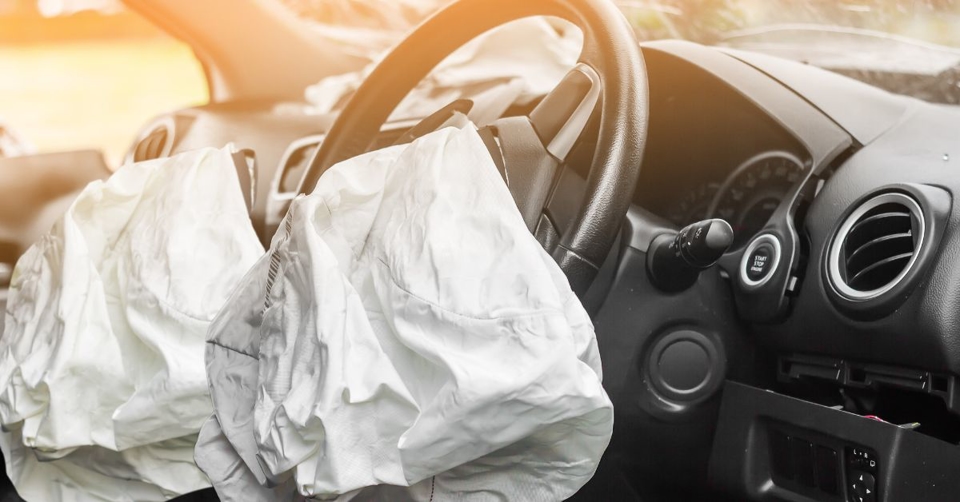When traffic is heavy and conditions aren't ideal, one small mistake can trigger a devastating chain reaction. A single distracted driver or a sudden stop on a crowded roadway can quickly lead to a multi-vehicle pileup, involving cars, trucks, and even commercial vehicles. These collisions often cause severe injuries, extensive property damage, and complicated questions about who should be held responsible.
Understanding how liability is shared in these accidents is key to protecting your rights and ensuring you are fairly compensated.
What Is a Chain Reaction Collision?
A chain reaction collision, also called a multi-vehicle pileup, happens when three or more vehicles crash in a sequence. For example, if one car rear-ends another at high speed, that force can push the second car into a third, and so on. On highways, this can escalate into dozens of vehicles being involved.
Unlike a two-car crash, determining liability in a pileup is rarely straightforward. Multiple drivers may have contributed to the accident, and insurance companies often try to shift blame away from their policyholders to reduce payouts.
How Liability Is Determined
In multi-vehicle accidents, investigators and attorneys look at several factors to assign responsibility:
1. The Initial Cause of the Crash
The driver who triggered the first collision is often considered primarily at fault. For instance, a driver texting behind the wheel who fails to stop in time could be responsible for setting the chain reaction in motion.
2. Each Driver's Response
Even if one driver initiated a crash, others may share liability if they were following too closely, speeding, or not paying attention. In pileups, it's common for multiple drivers to have contributed through negligent behavior.
3. Road and Weather Conditions
Icy roads, fog, or poor visibility can complicate matters. While weather plays a role, drivers are still expected to adjust their driving to conditions. Failing to do so may result in partial liability.
4. Evidence and Reconstruction
Police reports, witness statements, dashcam footage, and accident reconstruction experts are critical in sorting out fault. Because so many vehicles are involved, piecing together the sequence of events is often complex.
Comparative Fault in Multi-Vehicle Pileups
New York follows a comparative fault system. This means that more than one driver can be held responsible, and damages may be awarded based on each party's percentage of fault.
For example:
- If Driver A is 60% responsible for causing a pileup, and Driver B is found 40% responsible, each driver (or their insurer) will pay damages proportional to that percentage.
- Even if you are partially at fault, you may still be entitled to recover compensation for your injuries.
This system ensures that accountability is fairly distributed, but it also makes legal representation critical. Without an advocate, you risk insurance companies placing more blame on you than is justified.
Why These Cases Are So Complex
Multi-vehicle pileups involve:
- Multiple insurance companies all working to minimize payouts.
- Serious injuries that can require long-term treatment.
- Disputed liability where no one wants to accept fault.
The more vehicles involved, the more tangled these issues become. Victims may find themselves facing endless paperwork, denied claims, and pressure to settle for less than they deserve.
Protecting Your Rights After a Chain Reaction Collision
If you are involved in a multi-vehicle pileup, it's important to:
- Seek medical attention immediately, even if injuries aren't obvious.
- Gather as much evidence as possible at the scene, including photos and witness information.
- Avoid making statements to insurance adjusters before speaking with an attorney.
An experienced car accident lawyer can investigate the crash, collaborate with reconstruction experts, and counter insurance companies' attempts to assign blame unfairly.
Ajlouny Injury Law is Here For You
Chain reaction collisions are among the most complicated cases in personal injury law. Liability is often shared, but without proper legal guidance, injured drivers may end up bearing more responsibility than they should.
At Ajlouny Injury Law, we understand the devastating impact of these accidents and the challenges of navigating the legal aftermath. Our team is here to help you pursue the compensation you deserve, allowing you to focus on your recovery. If you or a loved one has been involved in a multi-vehicle pileup, get in touch with us to discuss your case.






